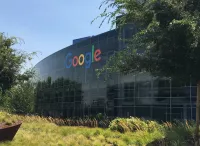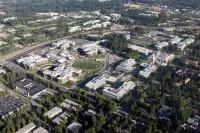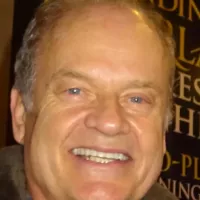LinkedIn is a professional networking platform founded in 2003, now a subsidiary of Microsoft. It serves as a vital tool for career development, enabling job seekers to post resumes and employers to advertise vacancies. The platform generates revenue primarily by providing recruiters and sales professionals access to member data, and through its LinkedIn Ads portal. With over 1 billion members across 200+ countries, LinkedIn facilitates professional connections and opportunities globally.
December 2001: Study on mobile phones use by blue-collar workers
In December 2001, a study noted the absence of research about tools for blue-collar workers to find work in the digital age and expressed concern about technology concentrating power in the hands of managers rather than workers.
December 2002: LinkedIn Founded
In December 2002, LinkedIn was founded by Reid Hoffman and a team from PayPal and Socialnet.com.
May 5, 2003: LinkedIn Launch
On May 5, 2003, LinkedIn was launched by Reid Hoffman and Eric Ly as a professional networking platform.
2003: Series A Investment
In late 2003, Sequoia Capital led the Series A investment in LinkedIn.
August 2004: LinkedIn Reaches 1 Million Users
In August 2004, LinkedIn reached 1 million users.
March 2006: LinkedIn Achieves Profitability
In March 2006, LinkedIn achieved its first month of profitability.
April 2007: LinkedIn Reaches 10 Million Users
In April 2007, LinkedIn reached 10 million users.
2007: Launch of LinkedIn Answers
In 2007, LinkedIn launched the LinkedIn Answers feature that allowed users to post questions to their network and allowed users to rank answers.
February 2008: Mobile version of LinkedIn launched
In February 2008, LinkedIn launched a mobile version of its site, available in six languages: Chinese, English, French, German, Japanese and Spanish.
February 2008: LinkedIn Launches Mobile Version
In February 2008, LinkedIn launched a mobile version of its website.
June 2008: Venture Capital Investment
In June 2008, Sequoia Capital, Greylock Partners, and other venture capital firms purchased a 5% stake in LinkedIn for $53 million, valuing the company at approximately $1 billion.
October 2008: Applications Platform Enabled
In October 2008, LinkedIn enabled an 'applications platform' allowing external online services to be embedded within a member's profile page.
October 2008: LinkedIn revealed plans for B2B research
In October 2008, LinkedIn revealed plans to open its social network of 30 million professionals globally as a potential sample for business-to-business research.
November 2010: Product and Service Recommendations
In November 2010, LinkedIn allowed businesses to list products and services on company profile pages, and members could 'recommend' products and write reviews.
2010: Employee Growth
By 2010, LinkedIn had about 500 full-time employees.
2010: International Expansion and Acquisition
In 2010, LinkedIn opened an International Headquarters in Dublin, Ireland, received a $20 million investment from Tiger Global Management LLC at a valuation of approximately $2 billion, and acquired Mspoke.
2010: LinkedIn and Facebook used as recruitment tools
In 2010, a study published in Social Science Computer Review found that LinkedIn and Facebook had become tools for recruiting job applicants and gathering additional information, influencing interview selection by recruiters.
2010: LinkedIn contributes internal technologies to open source
Since 2010, LinkedIn has contributed several internal technologies, tools, and software products to the open source domain.
January 2011: LinkedIn acquired CardMunch
In January 2011, LinkedIn acquired CardMunch, a mobile app maker that scans business cards and converts them into contacts.
January 2011: LinkedIn Files for IPO
In January 2011, LinkedIn filed for an initial public offering (IPO).
January 2011: InMaps feature in use since January 2011
Since January 2011, LinkedIn's InMaps, a feature which allowed you to visualize your professional network, had been in use.
February 2011: LinkedIn blocked in China after calls for "Jasmine Revolution"
In February 2011, LinkedIn was temporarily blocked in China following calls for a "Jasmine Revolution," speculated to be due to its role in facilitating access to Twitter for dissidents. Access was restored after a day.
May 19, 2011: LinkedIn Goes Public
On May 19, 2011, LinkedIn traded its first shares on the NYSE under the symbol "LNKD" at $45 per share, closing at $94.25 after a day of trading.
July 2011: LinkedIn launched "Apply with LinkedIn" button
In July 2011, LinkedIn launched a new feature allowing companies to include an "Apply with LinkedIn" button on job listing pages, enabling users to apply with their LinkedIn profiles.
December 2011: LinkedIn rolling out polls to groups
In December 2011, LinkedIn announced that they are rolling out polls to groups.
2011: Apache Kafka built and open sourced at LinkedIn
In 2011, Apache Kafka, a notable project, was built and open sourced at LinkedIn.
2011: Membership Growth
In 2011, LinkedIn's membership grew by approximately two new members every second.
June 2012: LinkedIn user passwords stolen in 2012 LinkedIn hack
In June 2012, cryptographic hashes of approximately 6.4 million LinkedIn user passwords were stolen by Yevgeniy Nikulin and other hackers who then published the stolen hashes online. This action is known as the 2012 LinkedIn hack.
July 2012: LinkedIn Acquires Digg Patents
In July 2012, LinkedIn acquired 15 key Digg patents for $4 million, including a 'click a button to vote up a story' patent.
September 2012: Launch of Skill Endorsements
Since September 2012, LinkedIn has enabled users to 'endorse' each other's skills.
October 2012: LinkedIn launched Influencers program
In October 2012, LinkedIn launched the LinkedIn Influencers program, featuring global thought leaders sharing their professional insights.
2012: Release of Shiftgig, a platform for hourly workers
In 2012 co-founder Eddie Lou's Chicago startup, Shiftgig (released in 2012 as a platform for hourly workers), was released as a specialized professional networking opportunity inspired by LinkedIn.
2012: LinkedIn supported over 1.2 million interest groups
In 2012, LinkedIn supported the formation of 1,248,019 interest groups, with membership varying greatly. These groups offered discussion areas and faced challenges with spam.
2012: LinkedIn CEO set a goal to create an "economic graph"
Inspired by Facebook's "social graph", LinkedIn CEO Jeff Weiner set a goal in 2012 to create an "economic graph" within a decade.
January 2013: LinkedIn dropped support for LinkedIn Answers
In January 2013, LinkedIn discontinued LinkedIn Answers, citing a focus on new ways to share professional topics.
May 31, 2013: LinkedIn added two-factor authentication
On May 31, 2013, LinkedIn added two-factor authentication, an important security enhancement for preventing hackers from gaining access to accounts.
June 2013: CardMunch noted as available LinkedIn app
In June 2013, CardMunch was noted as an available LinkedIn app.
July 23, 2013: LinkedIn announced Sponsored Updates ad service
On July 23, 2013, LinkedIn announced its Sponsored Updates ad service, allowing individuals and companies to pay to have their content sponsored and spread to their user base.
October 2013: LinkedIn announced "Intro" for iPhone users
In October 2013, LinkedIn announced "Intro", a service for iPhone users that inserts a thumbnail of a person's LinkedIn profile in correspondence within the iOS Mail app, achieved by routing emails through LinkedIn servers, raising privacy concerns.
November 2013: LinkedIn added Showcase Pages
In November 2013, LinkedIn announced the addition of Showcase Pages to the platform.
2013: LinkedIn app intercepted users' emails
At the end of 2013 it was announced that the LinkedIn app intercepted users' emails and quietly moved them to LinkedIn servers for full access. LinkedIn used man-in-the-middle attacks.
2013: Viadeo Comparison
In 2013, LinkedIn had significantly more members than competitor Viadeo (50 million members).
2013: Class Action Lawsuit Filed
In 2013, a class action lawsuit, Perkins vs. LinkedIn Corp, was filed against LinkedIn for automatically sending invitations without explicit permission.
2013: British GCHQ infiltrated Belgacom using a fake LinkedIn page
In 2013, documents released by Edward Snowden revealed that British GCHQ infiltrated Belgacom by luring employees to a false LinkedIn page as part of Operation Socialist.
February 2014: LinkedIn launches Simplified Chinese version
In February 2014, LinkedIn launched its Simplified Chinese language version, "领英", officially extending its service to China. LinkedIn acknowledged that content would be censored to comply with Chinese rules.
April 2014: LinkedIn Leases New Building in San Francisco
In April 2014, LinkedIn announced it had leased 222 Second Street in San Francisco to accommodate up to 2,500 employees.
June 2014: LinkedIn announced "Galene" search architecture
In June 2014, LinkedIn announced its "Galene" search architecture to give users access to the economic graph's data with more thorough filtering of data.
November 2014: LinkedIn lost a motion to dismiss lawsuit
In November 2014, LinkedIn lost a motion to dismiss the lawsuit, in a ruling that the invitations were advertisements not broadly protected by free speech rights.
2014: Iran-based group created fake LinkedIn accounts
In 2014, Dell SecureWorks CTU discovered that Threat Group-2889, an Iran-based group, created 25 fake LinkedIn accounts for spearphishing.
2014: LinkedIn to remove Product and Services Pages
In 2014, LinkedIn announced they were going to be removing Product and Services Pages paving the way for a greater focus on Showcase Pages.
2014: LinkedIn retired InMaps
In 2014, LinkedIn retired InMaps, a feature which allowed users to visualize their professional network.
2014: Data retention law in force in Russia
In 2014, a data retention law came into force in Russia, requiring the user data of Russian citizens to be stored on servers within the country.
February 2015: Updated Developer API Terms
In February 2015, LinkedIn released updated terms of use for their developer API, which enables interaction with LinkedIn's data through third-party applications.
2015: LinkedIn added an analytics tool to its publishing platform
In 2015, LinkedIn added an analytics tool to its publishing platform, allowing authors to better track the traffic that their posts receive.
2015: LinkedIn Membership
In 2015, LinkedIn had more than 400 million members in over 200 countries and territories.
2015: Lawsuit Settlement
In 2015, LinkedIn settled the Perkins vs. LinkedIn Corp lawsuit for $13 million regarding unauthorized email invitations.
2015: Russian Data Storage Legislation
In 2015, Russia enacted national legislation requiring social media networks to store citizens' personal data on servers located in Russia.
2015: LinkedIn published annual rankings of Top Voices
Since 2015, LinkedIn has published annual rankings of Top Voices on the platform, recognizing members that generated the most engagement and interaction with their posts.
2015: Revenue Primarily from Recruitment and Sales Access
Starting in 2015, a majority of LinkedIn's revenue came from selling access to member data to recruiters and sales professionals. LinkedIn also introduced LinkedIn Ads, an ad portal for companies.
2015: Lawsuit settled in favor of LinkedIn members
The lawsuit was eventually settled in 2015 in favor of LinkedIn members.
January 2016: San Francisco Staff Size
As of January 2016, LinkedIn had 1,250 staff based in San Francisco.
February 2016: LinkedIn Shares Drop
In February 2016, LinkedIn's shares dropped 43.6% following an earnings report, resulting in a $10 billion loss in market capitalization.
March 2016: Move to New San Francisco Building
In March 2016, LinkedIn started to move into its new building at 222 Second Street in San Francisco.
May 2016: LinkedIn Influencers program has over 750 influencers
As of May 2016, the LinkedIn Influencers program included over 750 global thought leaders sharing insights.
May 2016: 117 million LinkedIn usernames and passwords offered for sale online
In May 2016, 117 million LinkedIn usernames and passwords were offered for sale online for the equivalent of $2,200. These account details are believed to be sourced from the original 2012 LinkedIn hack.
June 2016: Microsoft Announces Acquisition of LinkedIn
In June 2016, Microsoft announced its acquisition of LinkedIn for $26.2 billion, at $196 a share.
October 2016: LinkedIn addressed criticism of its endorsement feature
In October 2016, LinkedIn acknowledged that it "really does matter who endorsed you" and began highlighting endorsements from "coworkers and other mutual connections" to address the criticism of the endorsement feature.
November 10, 2016: LinkedIn ban upheld in Russia
On November 10, 2016, the ban on LinkedIn in Russia was upheld for violating data retention laws, requiring user data of Russian citizens to be stored on servers within the country. ISPs began blocking LinkedIn thereafter.
December 8, 2016: Microsoft Completes Acquisition of LinkedIn
On December 8, 2016, Microsoft completed its acquisition of LinkedIn, allowing LinkedIn to retain its brand and independence with Jeff Weiner remaining as CEO.
December 2016: Microsoft Acquires LinkedIn
In December 2016, Microsoft acquired LinkedIn, making it a wholly owned subsidiary.
2016: LinkedIn Blocked in Russia
In 2016, LinkedIn's access was blocked by Russian authorities for non-compliance with Russian data storage legislation.
2016: LinkedIn Announces Dublin Expansion
In late 2016, LinkedIn announced a planned increase of 200 new positions in its Dublin office.
2016: Start of LinkedIn Top Companies lists
The Top Companies lists were started in 2016 and are published annually.
May 2017: Cease-And-Desist to hiQ Labs
In May 2017, LinkedIn sent a Cease-And-Desist letter to hiQ Labs for scraping data from LinkedIn's public profiles.
May 2017: Research Policy published analysis of PhD holders use of LinkedIn
In May 2017, Research Policy published an analysis of PhD holders' use of LinkedIn, finding that those who transition into industry are more likely to use LinkedIn, have larger networks, and benefit from international connections.
2017: Chinese intelligence services created fake LinkedIn profiles
In 2017, Germany's BfV alleged that Chinese intelligence services created fake social media profiles on sites such as LinkedIn to gather information on German politicians and government officials.
2017: LinkedIn's Profinder marketplace
In 2017, LinkedIn's Profinder, a marketplace for freelancers, had around 60,000 freelancers in over 140 service areas.
2017: Research on social networking services as labor market intermediaries
In 2017, sociologist Ofer Sharone found that social networking services like LinkedIn and Facebook have a filtration effect on the labor market that is not necessarily related to evaluations of merit.
2017: LinkedIn changed its connection process
LinkedIn connection request process changed in 2017, allowing users to connect with up to 30,000 people, making it a more proactive networking site.
2017: B2B Marketers Use of LinkedIn
Since 2017, 94% of B2B marketers use LinkedIn to distribute content.
2017: Job postings from Western countries to China no longer possible
Since Autumn 2017, job postings from western countries for China aren't possible anymore.
May 2018: LinkedIn Referrals discontinued
According to the company's website, LinkedIn Referrals will no longer be available after May 2018.
October 2018: Study on LinkedIn connections and job referrals
In October 2018, a study by Foster School of Business professors found that creating LinkedIn connections with professionals at target companies may not increase the likelihood of referrals for job seekers due to competition concerns.
2018: LinkedIn launched carousel ads
In 2018, LinkedIn launched its carousel ads feature, allowing businesses to showcase their products or services through swipeable cards.
July 2019: Study on recruiter behavior on LinkedIn
In July 2019, sociologists found that recruiters often use LinkedIn to target passive candidates for high-skilled positions, while low-skilled positions are advertised on online job boards, creating a bifurcated job market.
September 2019: Evaluation of LinkedIn training for job seekers in South Africa
In September 2019, an evaluation of training job seekers in South Africa to use LinkedIn found a 10 percent increase in employment by reducing information frictions, with effects lasting about 12 months.
September 2019: Appeals Court Rejects LinkedIn's Arguments
In September 2019, the appeals court rejected LinkedIn's arguments regarding hiQ Labs' data scraping, upholding a preliminary injunction that forced LinkedIn to allow hiQ to continue.
2019: Launch of Open for Business and LinkedIn Events
In 2019, LinkedIn globally launched the 'Open for Business' feature and 'LinkedIn Events'.
2019: Alphabet ranked as the most sought-after U.S. company by LinkedIn
The 2019 LinkedIn Top Companies list identified Google's parent company, Alphabet, as the most sought-after U.S. company.
June 2020: Jeff Weiner Steps Down as CEO
In June 2020, Jeff Weiner stepped down as CEO of LinkedIn and became executive chairman, with Ryan Roslansky taking over as CEO.
July 2020: LinkedIn Lays Off Employees
In late July 2020, LinkedIn laid off 960 employees (6% of the workforce) due to the effects of the COVID-19 pandemic.
October 2020: Worldwide rollout of LinkedIn Stories
In October 2020, LinkedIn Stories was rolled out worldwide.
2020: LinkedIn under scrutiny for misinformation handling
In 2020, LinkedIn faced scrutiny regarding its handling of misinformation and disinformation, particularly concerning fake profiles and falsehoods related to COVID-19 and the 2020 US presidential election.
2020: LinkedIn Membership Growth
In 2020, LinkedIn's membership grew to over 690 million members.
2020: Research on high status individuals self-selecting into professional networking services
In 2020, research using LinkedIn data indicated that high status individuals are more likely to self-select into professional networking services.
April 2021: Breach affected 500 million users
A breach disclosed in April 2021 affected 500 million users.
April 2021: Data Leak Claim
In April 2021, CyberNews claimed that 500 million LinkedIn accounts' data had leaked online, but LinkedIn stated it was an aggregation of data from multiple sources.
June 2021: Breach affected 92% of users
A breach disclosed in June 2021 was thought to have affected 92% of users, exposing contact information, employment information.
June 2021: PrivacySharks Claim of Data on Sale
In June 2021, PrivacySharks claimed over 700 million LinkedIn records were on sale on a hacker forum; LinkedIn stated this was scraped data and a violation of their Terms of Service.
September 2021: LinkedIn Membership
As of September 2021, LinkedIn had over 774 million registered members.
September 2021: LinkedIn discontinued LinkedIn stories
In September 2021, LinkedIn discontinued LinkedIn stories, a feature that was rolled out worldwide in October 2020.
2021: LinkedIn Revenue
In 2021, LinkedIn earned $10.3 billion in revenue.
2021: Amazon ranked as the top company by LinkedIn
The 2021 LinkedIn top list identified Amazon as the top company, with Alphabet ranked second and JPMorgan & Chase Co. ranked third.
2022: LinkedIn Revenue
In 2022, LinkedIn earned $13.8 billion in revenue.
2022: Microsoft's Largest Acquisition
In 2022, Microsoft acquired Activision Blizzard, making it larger than the 2016 acquisition of Linkedin.
2022: LinkedIn ranked first in phishing attempts
In 2022, the company ranked first in a list of brands most likely to be imitated in phishing attempts.
2022: LinkedIn removes accounts not following its criteria without prior notice
Since 2022, LinkedIn has been removing accounts that do not follow its criteria without giving users any prior notice.
May 2023: LinkedIn announces phasing out InJobs app
In May 2023, LinkedIn announced that it would be phasing out the InJobs app by August 9, 2023.
May 2023: LinkedIn Job Cuts and Restructuring
In May 2023, LinkedIn cut 716 positions to streamline operations while also announcing 250 new job opportunities and the discontinuation of China local job apps.
August 2023: LinkedIn phased out InJobs app
In August 2023, LinkedIn phased out the InJobs app in China.
August 2023: LinkedIn users targeted by hackers in hijacking and phishing bid
In August 2023, several LinkedIn users were targeted by hackers in a hijacking and phishing scheme. The hackers locked users out of their accounts and demanded ransom payments under the threat of permanent account deletion.
November 2023: LinkedIn Reaches 1 Billion Members
In November 2023, LinkedIn reached a member count of one billion.
2023: Inflation Adjusted Investment
By 2023, the $103 million invested in LinkedIn in January 2011 was equivalent to about $138 million when adjusted for inflation.
2023: Adjusted Initial Share Price
In 2023, LinkedIn's initial share price of $45 in May 2011 was approximately equivalent to $60 when adjusted for inflation.
2023: LinkedIn user passwords offered for sale online - 2023 value
In May 2016, 117 million LinkedIn usernames and passwords were offered for sale online for the equivalent of $2,200 (~$2,793 in 2023).
February 11, 2024: LinkedIn's Global Presence
As of February 11, 2024, LinkedIn is headquartered in Mountain View, California, and operates with 36 global offices.
February 2024: LinkedIn's Employee Count
In February 2024, LinkedIn reported having approximately 18,500 employees.
June 2024: Testing New AI Assistant
In June 2024, Axios reported LinkedIn was testing a new AI assistant for its paid Premium users.
September 2024: Pause of UK User Data for AI Training
In September 2024, LinkedIn paused the use of UK user data for AI model training after concerns from the Information Commissioner's Office (ICO), also providing UK users with an opt-out option.
November 2024: Challenge to Australian Legislation
In November 2024, Linkedin challenged Australian legislation banning under-16's from social media platforms, arguing it lacks content appealing to minors.
Mentioned in this timeline
Facebook is a social media and networking service created in...

Google LLC is a multinational technology company specializing in online...
California is a U S state on the Pacific Coast...

Microsoft an American multinational technology corporation headquartered in Redmond Washington...
India officially the Republic of India is a South Asian...

San Francisco is a major commercial financial and cultural hub...
Trending

Simon Cowell is a prominent English television personality and businessman recognized for his role as a judge on various talent...

7 months ago Gary Payton Reflects on Jordan Matchup and Hypothetical Stats in Today's NBA

11 days ago Spurs Defeat Nuggets in Thrilling Game, Mavericks Face Nuggets

22 days ago Michael Douglas and Catherine Zeta-Jones Celebrate 25 Years of Marriage with Throwbacks
Luke Kornet is an American professional basketball player currently playing for the San Antonio Spurs in the NBA He's a...

6 months ago Jack Black's Minecraft Movie Sets Premiere on HBO Max, June 20, 2025
Popular

Candace Owens is an American conservative political commentator and author...

Ilhan Omar is an American politician currently serving as the...

XXXTentacion born Jahseh Dwayne Ricardo Onfroy was a controversial yet...

Tom Cotton is an American politician and Army veteran currently...
The Kennedy Center Honors are annual awards recognizing individuals and...

Kelsey Grammer is an accomplished American actor producer and singer...
